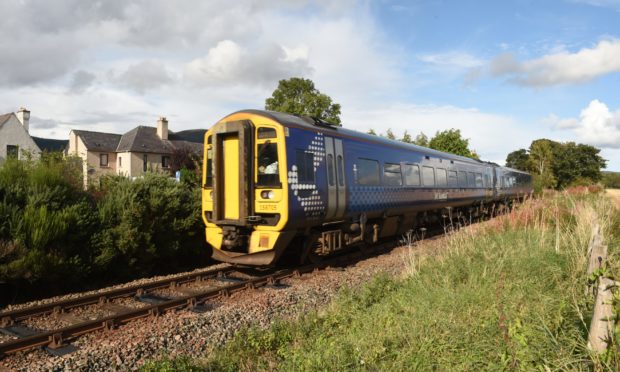Almost 60 years after the widespread axing of hundreds of Scottish railway stations, proposals have been made to reverse the closures and boost the economy.
The Scottish Conservatives have made it party policy to review the controversial cuts to the service enacted by British Railways Board chairman Richard Beeching in the 1960s.
In his report, The Reshaping of British Railways, he called for around one-third of the UK’s train stations to be shut, affecting some 5,000 miles of track.
At the time, he said the routes were not cost-effective to run.
This left some communities effectively cut off from the rail network, including the likes of those in Fraserburgh, who then had to travel 40 miles to their nearest station.
But the Scottish Conservatives have said they want to re-examine these decisions and see if reopening some locations could help the economy.
Party leader and Moray MP Douglas Ross said: “We need to think locally about the infrastructure our towns and villages need.
“The Beeching cuts of the 1960s saw many iconic Scottish railways and stations closed, like the Formartine to Buchan line.
🛤️ The Beeching cuts of the 1960s saw many iconic Scottish railways and stations closed, like the Formartine to Buchan line.
🚉 We would review the Beeching lines, with the intention of reopening connections and stations that will support local growth.#SCC20 pic.twitter.com/YmyVkgSLLW
— Scottish Conservatives (@ScotTories) November 22, 2020
“Now, 50 years later, we need to assess the long-term damage that decision has done to the communities affected and whether the economic case has changed.
“The reopening of the Borders Railway has shown that local rail can be a success again.
“So we would review the Beeching lines, with the intention of reopening connections and stations that will support local growth.”
In recent years there has been a renewed interest in revitalising part of the rail network.
Just last month Kintore station welcomed its first train in decades following a campaign to bring it back into use.
Work is ongoing in other areas, including Evanton in Ross-shire, for the reopening of facilities cut by Beeching.
And earlier this year north-east regional transport body Nestrans secured an £80,000 grant to explore the potential benefits of new stations between Aberdeen and Laurencekirk.
This could include connections in Aberdeen suburb Cove and Aberdeenshire town Newtonhill, which local MSP Liam Kerr believes are “prime contenders” for fresh work.
He said: “I believe Newtonhill and Cove are prime contenders for reopening.
“Good transport links are essential for helping communities thrive and grow.
“We will focus on rebuilding our communities by restoring Scotland’s railways.
“After Covid-19, we have an opportunity to invest in the local infrastructure, roads and digital connectivity that our communities need to grow and thrive.”
A Transport Scotland spokeswoman said: “Scottish Ministers are committed to ensuring the railway meets future growth needs and are willing to consider proposals for new stations, or reopening existing ones, that arise from a positive transport appraisal which takes account of the impact on the wider rail network.
“Nestrans has been awarded £80,000 through the Local Rail Development Fund to carry out appraisal studies on Cross Aberdeen rail travel.
“We have received Nestrans’ Case For Change, the first of three appraisals, which includes information on Newtonhill and Cove stations.
“While it is too early to say if these stations will be re-opened at this stage of the process, if Nestrans’ appraisals provide robust strategic business cases we will consider them for potential further funding or support through our rail pipeline process.”

